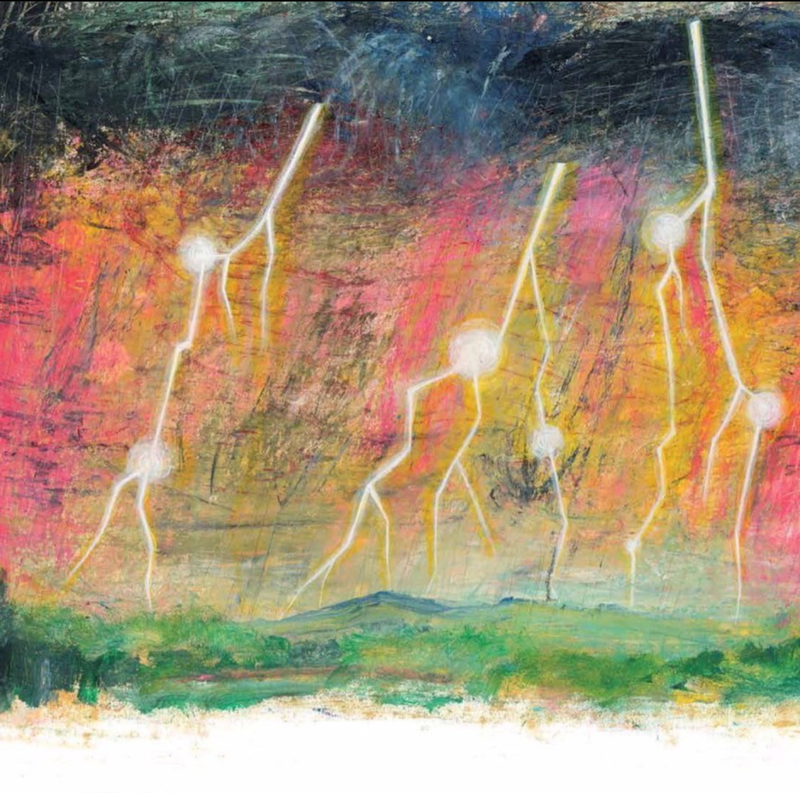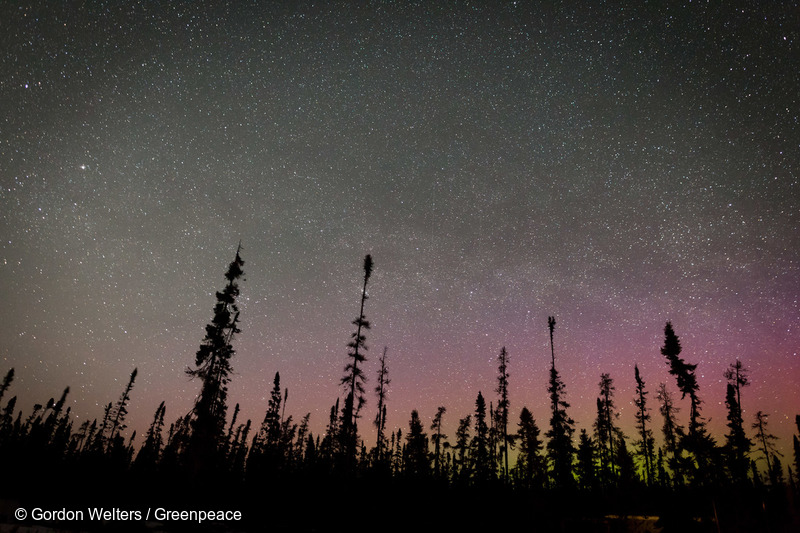The art of survival and healing on the fourth anniversary of typhoon Yolanda
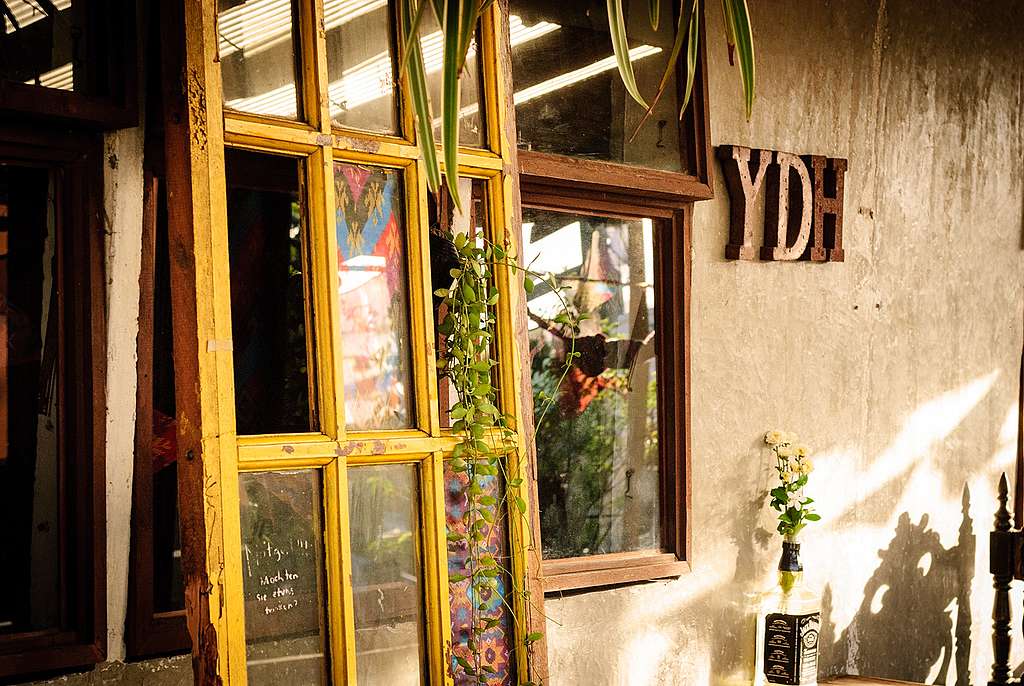
Before we enter into her tale, “The Faithful Gardener: A Wise Tale About That Which Can Never Die”, storyteller and psychoanalyst, Dr. Clarissa Pinkola Estés offers a family blessing:
“Whomsoever is still awake at the end of a night of stories, will surely become the wisest person in the world.”
So may it be for you.
So may it be for us all.”
One week ago, the eve of the fourth anniversary of Typhoon Haiyan (or Yolanda as it is known locally) is such an evening for stories, and a generous invitation to wisdom. The setting is the Yellow Doors Hostel in Tacloban — itself created from objects and materials found in Yolanda’s destructive aftermath, a response to local needs for affordable accommodation in her wake, and a testimony to the community spirit of the volunteers who helped to build it. On the walls are images by photographer, Khrizer Malibago from the aftermath of Yolanda, an exhibit, “capturing the phases of every survivor’s horror — the sight of death on streets, missing relatives, and homes to ruins — and the process of decanting the sediments (mga larog) of the horror to gain healing.”
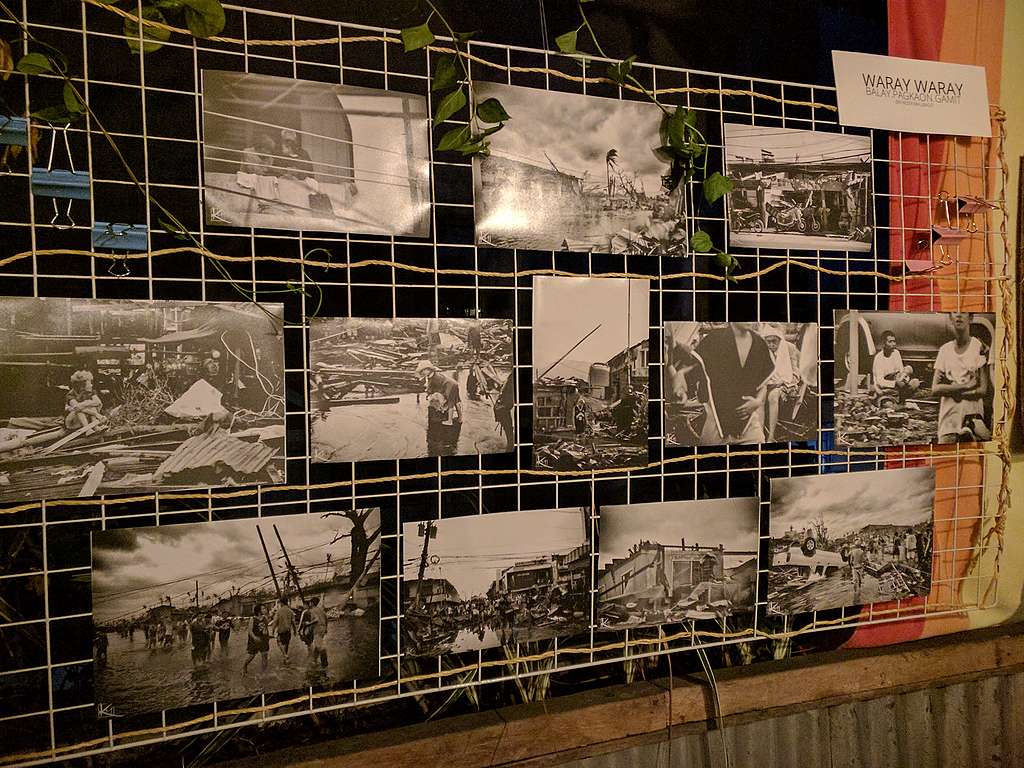
The night’s brave storytellers are survivors of an infamous event unimaginable to most of us: the deadliest and most powerful typhoon to make landfall on record, taking at least 10,000 lives in an event that would be compared to the 2004 Indian Ocean tsunami in the scale of its devastation. Four years ago on this night, these would be the final hours many of them would see parents, brothers, sisters, children, and friends alive. A line in individual and collective time, in memory, in life as they knew it, would be drawn the next day. To honour the loved ones lost and to share their own journeys of pag huwas (“healing” in Waray language), each storyteller takes the stage to share what Yolanda brought: heartbreak, guilt, shock, love, triumph, faith, and hard-earned wisdom through song, spoken word, film, photographs, and narrative — many of them given voice in public for the first time.
We sit in the dark on the floor in a semi-circle, fans blowing gently overhead on a warm, still Tacloban evening. The sound of conversation, laughter and tricycle horns outside feels like another world beyond the container of this room. Technically, I know what will happen — there is a program designed and it will be followed. But I cannot know what these storytellers will stir up and grow in me and in the work I do. That is the unpredictable and sacred alchemy of story I now know well enough to simply allow and let it do its thing.
A lone stool, microphone and spotlight underlines the sheer vulnerability and courage of each who will take their turn. Brene Brown says, you cannot have one without the other, and the former is often the pathway to the latter. But this kind of vulnerability and courage is why these stories are a gift, especially to those of us listening who did not experience Yolanda; a gift whose price tag is presence.
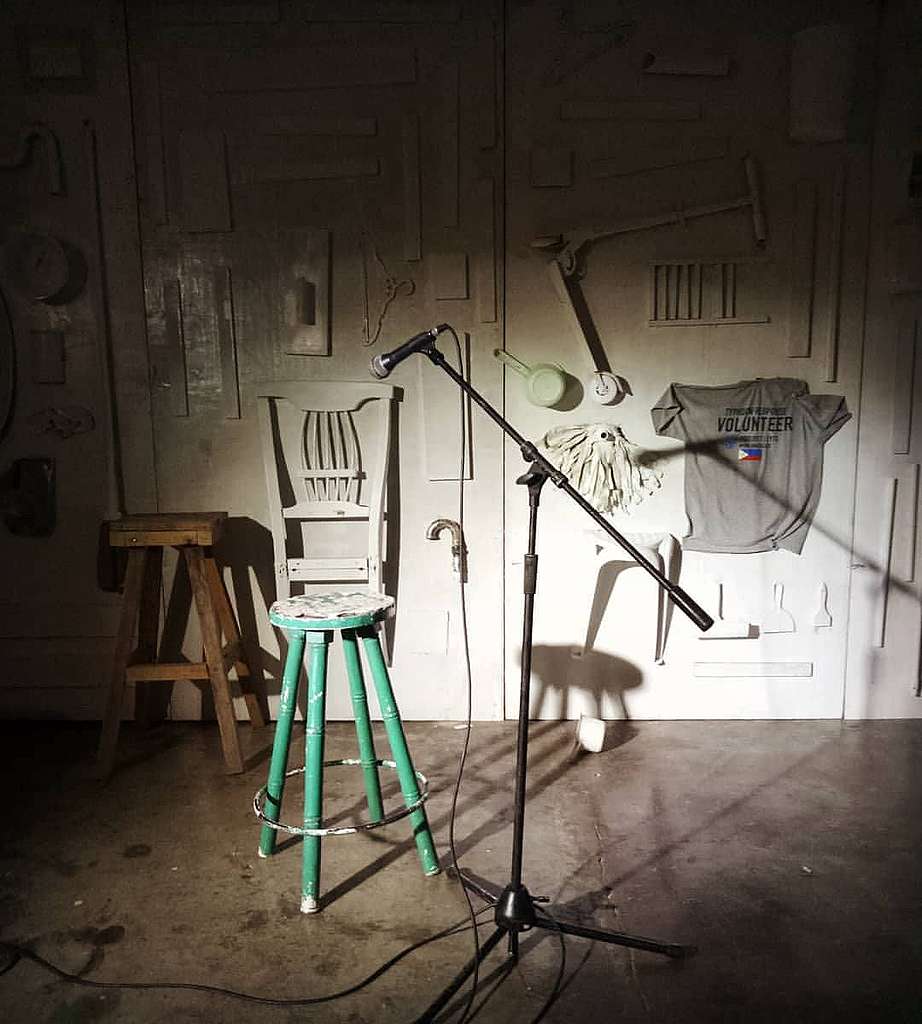
Hanging on the background wall are objects found after the typhoon. I hoped the storytellers would share not only what happened, but what they discovered, what this terrible event meant, and still means to them. These brave souls are not only survivors — astounding in itself. They are teachers of the most remarkable kind: willing to summon their monsters, haul up the darkest, most wrenching moments of their lives, offering a masterclass in ineffables: What would I have done in that moment, if it were me? What would I do if the world turned upside-down overnight? What exactly would I need to do to be okay again?
Spoiler alert: I don’t have any real answers to these by night’s end, of course. I know who I’d like to think I would be and do (and if I lost my books, all bets are off). But I have a new collection of mentors on whose stories I can call if the unimaginable ever struck. And from what I can tell tonight, ‘that which can never die’ is, pure and simple, love — of family, friends, neighbours, God, community, home, and city. And hope, almost as stubborn, it appears when needed and refuses to leave.
Panx Solajes
“Balud” (the waves)
Filmmaker, Panx Solajes opened the night with his response to Yolanda in the short film, “Balud” (“waves”). We begin with this invitation to feel what Yolanda felt like in a way words do not reach.
The mood Panx evokes is eerie and haunting; the darkness, the starkness, the sounds of rushing water amid an insistent, whispered poem of the threat of the sea, the sense of being underwater, chaos and fear evoked in two tones. The poem on the soundtrack is from Sea Stories, Old Women in My Village by Filipina poet, Merlie M. Alunan, who teaches at University of the Philippines Visayas, Tacloban College:
“Old women in my village say, “the sea is always hungry” they say. That’s why it comes without fail to lick the edges of the barrier sand.”
Aaron JP Almadro
“I hope you keep telling our stories. Because this is us.”
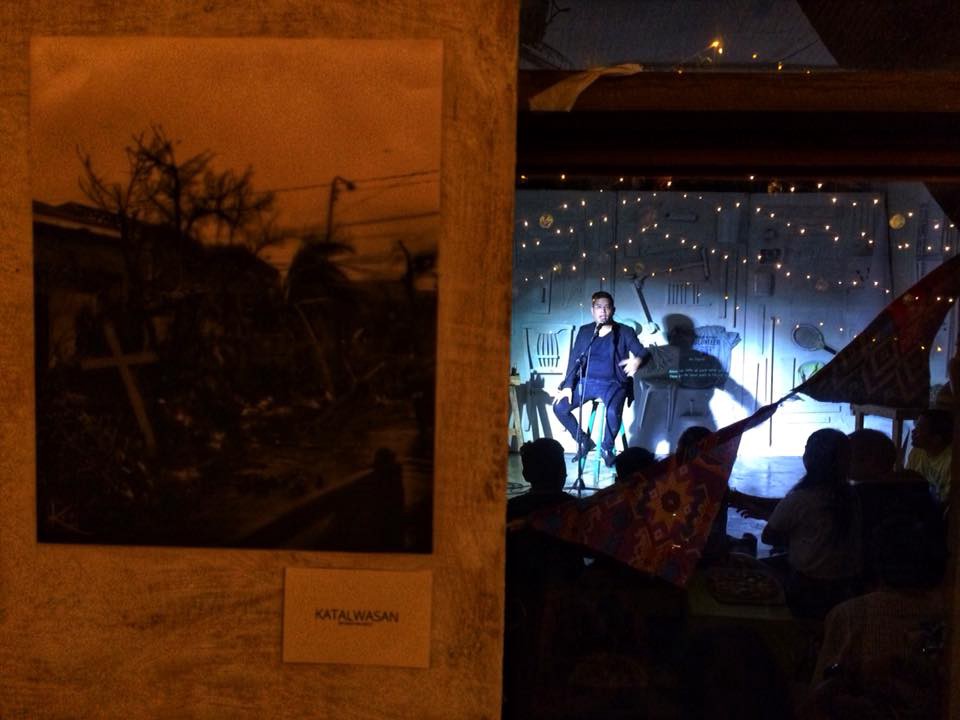
Aaron JP Almadro takes the stool with his beer and says the mood of Panx’s film so evokes Yolanda for him — “minus the smell, the pain” — that he stepped outside rather than watch it again. He says usually a typhoon means no school and no work; they have beers, play cards, tell ghost stories, cook, eat, cuddle on the couch or in bed, talk all night long. It is as good a reason as any for family and friends to get together with food and drink, enjoy each other’s company and wait out the storm’s visit. They had no real reason to believe this visitor was going to behave any differently than her predecessors.
Aaron details the day before and the horrific days after he lost his mom and dad to Yolanda’s surge. He dropped them off to spend the night at Budget Hotel in Tacloban to avoid the usual flooded roads, power outages and inconveniences typhoons bring. He describes the day after Yolanda came, walking the road to the hotel to look for his parents, the way strewn with dead bodies, and noticing one woman’s body on the ground just outside the hotel’s entrance. Her face was obscured by the inside of a tyre. She was wearing pink pants, a floral top — pyjamas like mom’s. No, it can’t be her, he thinks. Moving in closer, he notices she is wearing earrings, just like mom’s. No, it can’t be her. Someone must have looted her things. And he wants so badly for this to be true. His stomach heavy now, mind swimming. He removes the tire from her face. And it is his mother.
In the immediate days afterwards, he tells of how quickly a routine formed, and many survivors in the audience can relate: sleep two or three hours a night. Wake up and go to the first location where there is supposed to be water or food and line up. Go to the next location where there is reportedly water or food and line up. Move debris away from the house or neighbourhood. Forage for items to create better shelter. Discover new ways to cook canned sardines. Experiment with new ways to alter the unsavoury smell of the rice provided in the relief packages.
“Even though it’s still painful four years later, we want to tell our stories so we and you don’t forget. And so people know we didn’t go crazy, we didn’t kill ourselves…we survived”.
Sylvia Lopera
“The horror of the tragedy would be a constant reminder to us to value life.”
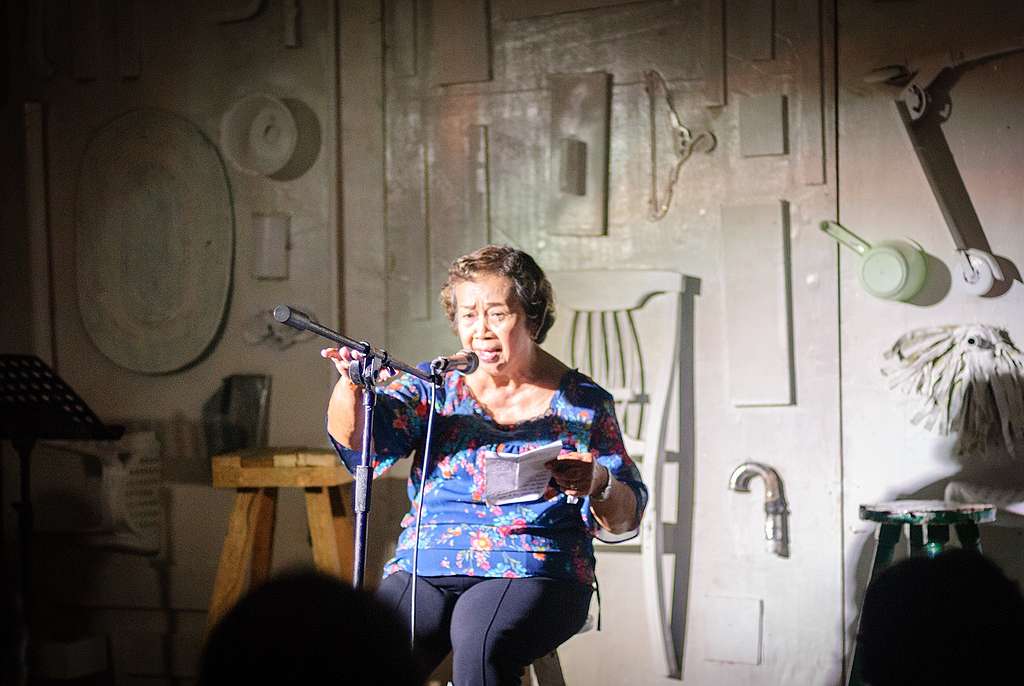
Sylvia Lopera, the eldest and most colourful storyteller of the night was helped onto stage with caring hands, holding onto her written script in English. But that proved too restrictive once she got going, and she decided to improvise most of her story off the cuff in Waray to the great entertainment of the audience, with the occasional interjection in English. Her narrative was obviously colourful and hilarious in detail; she had the crowd clapping, howling and hooting with delighted recognition of the common experiences in her Yolanda experience. Not the first time that day, I wished I understood Waray. Her theme was about finding the humour, the absurd and improbable moments, even in the midst of a life and death situation (a characteristic, I learned this week, is typically, admirably Waray). She told us about her household helper, how he managed to get her up to the roof of the house, how he tied bedsheets together end-to-end to a pole, so they could stay above the racing and rising water. He saw two snakes swimming towards her, and leapt to try to save her from them. But they had no time for anyone, didn’t even seem to notice them, they were just trying to save themselves.
She echoed a common refrain among survivors I spoke to throughout the week: “Nobody knew what a storm surge was so the warning was useless. They should have used language that people could understand”.
Shev Lira
“Even though I’m alone now, I’m still fighting”
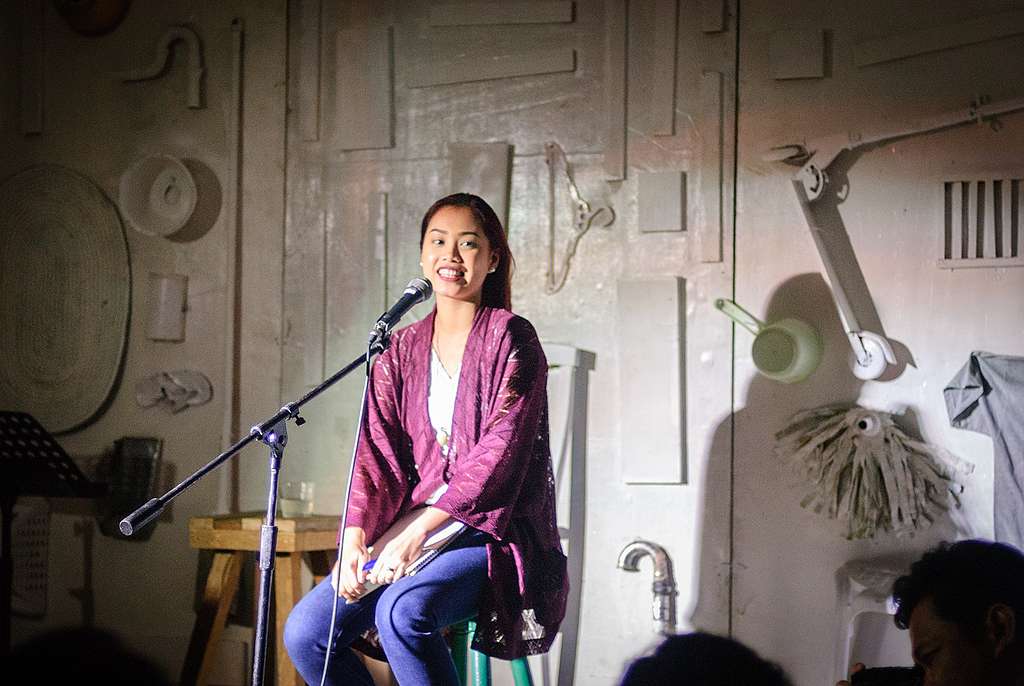
It was Shev’s first time telling her story in public; before she took the microphone, she told me she was fighting the (entirely normal) urge to run away. Shev is 24 years old now, and she lost her entire family — parents, brother and sister, and four year old daughter in the typhoon. Her story begins with the last conversation she would have with her mother. Shev was in Cebu, where she was working when Yolanda came, and she could not go home to San Jose. She called her mother the night before the typhoon and begged her to evacuate because of what she heard on the news — this would not be a typical storm. Her mother insisted they were okay, and the house could withstand the typhoon. Besides, the Santo Nino (Jesus) would take care of them. Their bodies were never found.
People tell her she is not a survivor because she was not there — this is painful for her to hear. Because surviving Yolanda is more than surviving the physical storm surge itself and the days of deprivation thereafter. There is surviving the loss, staying afloat despite the overwhelming grief that threatens to drown you long after the typhoon has left.
“After Yolanda, I grew up immediately. I didn’t want to think about other people that had families. If I drown myself in sorrow, I’m going to lose myself. So I had to be strong, I need to be strong. And I need to keep fighting.
“I have to live life for them — for my father, mother, my sister, my brother, and my four year old daughter.
“I’m proud of me. I hope my family’s proud of me. I hope my daughter’s proud of me.”
“Before her mom was such a crybaby, but now her mom is this strong. Even though I’m alone now, I’m still fighting.”
Jove Opina
“F**k it, I am a survivor.”
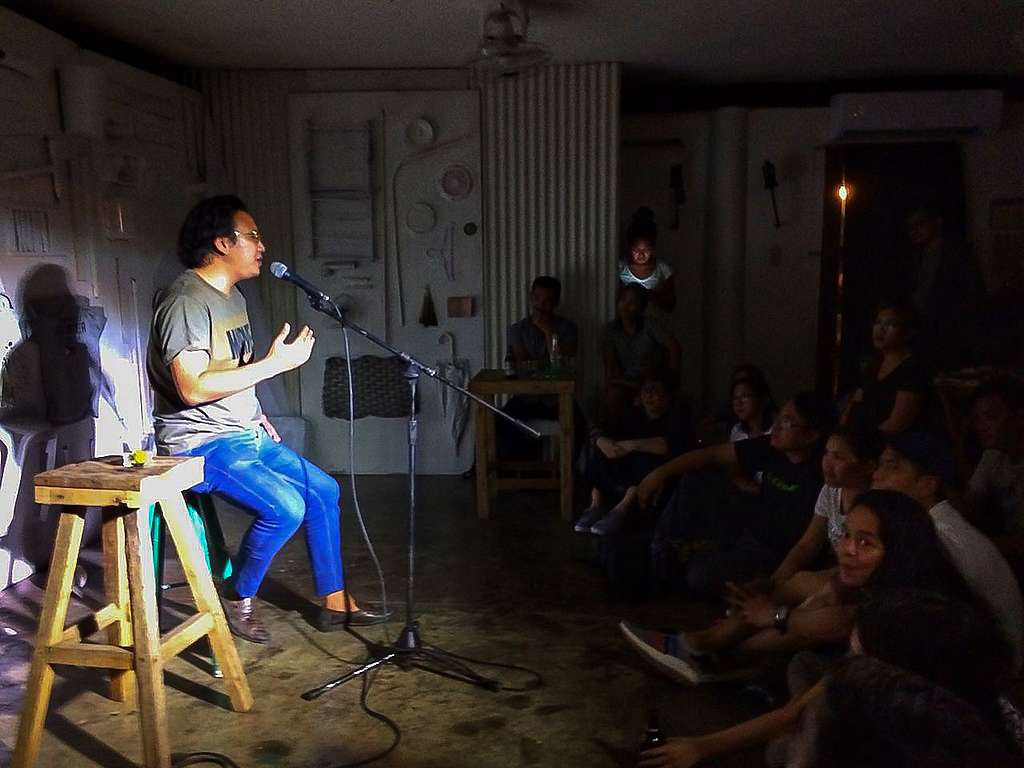
Jove begins by confessing he may have had a few drinks to warm him up to tell his story. “I’m really hesitant to share this because if you’re looking for inspiration, my story is not inspiring”. After much encouragement by friends over the years, Jove decides tonight is the night he will tell his atypical Yolanda story — and he repeatedly, comically apologises for what he calls his narcissism. But it sounds more like plain humanity.
His family checked into a hotel when they heard of Yolanda’s imminent arrival because they did not want to experience the inevitable blackouts. He packed his vacation clothes, because as Aaron also said, the usual typhoon is an opportunity to enjoy a mini holiday. Little did Jove know that within 24 hours, he would find himself dragging a crate of food along, which he had finally mustered up the will (or by necessity, drowned the shame) to “loot” from the nearby mall, to feed his family back at the hotel — wearing his now muddy white vacation shorts, no less — and forced to face a series of philosophical and absurd dilemmas along the way.
First, an unusual meet-cute that even Nora Ephron could not have dreamt up. The scene: Jove is dragging his successfully looted crate of food along the road as it loudly, embarrassingly scrapes and rattles against the asphalt. The road is covered in all manner of debris to side-step, with people hurrying along to find food, relatives, help. Any semblance of clean feet and his nice white shorts now gone, he looks up to see — of all the people, of all the times, in all the places — his #1 crush standing mere feet in front of him.
“Shit, of all the days in the year, this is the time that you choose for us to run into each other!” This is clearly some cosmic joke. The Crush is one of the ‘elites’, so Jove is startled to see them just out and about in the streets in the first place. And The Crush looks so fresh and clean, as if the typhoon did not even hit them… and here is Jove looking less than crush-worthy, with that damn noisy crate, the emblem of his need and desperation. As The Crush starts to walk toward him, his heart racing, Jove thinks, “What do I say when they come over? What am I going to do? The crate is making so much noise. Do I let go of the crate?” Dilemma. But he decided, pride be damned, he was going hold onto the crate, because his family needed to eat. As The Crush approached, Jove blurts out, “Hey! How’s everyone… everyone good?”
Awkward, maybe. But I say, a valid question given the circumstances. Even in the midst of devastation, hearts race and crushes remain alight. People still think about their dignity, it is all they have in these moments. And I think the crowd agreed, it is entirely okay to want to look good in front of your crush.
And if mortification were not enough, cut to the next scene: still walking along with his noisy crate, Jove encounters a man carrying his pregnant wife, pleading for help to get her to the hospital. For a few painful moments, he is struck with a serious dilemma: “Should I help this pregnant woman and her husband if it means I have to abandon the supplies my own family needs? There were plenty of us just looking at the couple with all our looted things — and I’m so sorry, please don’t judge me — but I felt really guilty that I second guessed what decision I was going to make! If I let the crate go, that crate is my family’s lifeline. I don’t know when we could get help…And a lot of people will grab it. But if I don’t let it go, how can I help the pregnant woman and her husband — there is another life at stake here. I’m not religious, but I prayed to God, please please please, how can I help this person? Please send help.” After a few minutes, a motorcycle passed by, and the crowd got the driver to take the couple to the hospital.
Jove says when he would travel, people would ask, where he was from. And before Yolanda, he would say “Tacloban”, but no one knew where that was, so he would just say he was from Cebu. After Yolanda, he would answer the same question with “Tacloban”, and the awed reaction would follow, “you’re a survivor!” And they would offer to buy him drinks. When people would tell him he is a survivor, he did not feel worthy of being called such, because he did not suffer as much as other people. He did not think his Yolanda story was worth sharing. “But I felt pain, too, watching my community be broken like that. F**k it, I am a survivor. That’s the first time I’ve said it, I’m a survivor!”
Joanna Sustento
“I never thought I could be the kind of person to inspire other people”
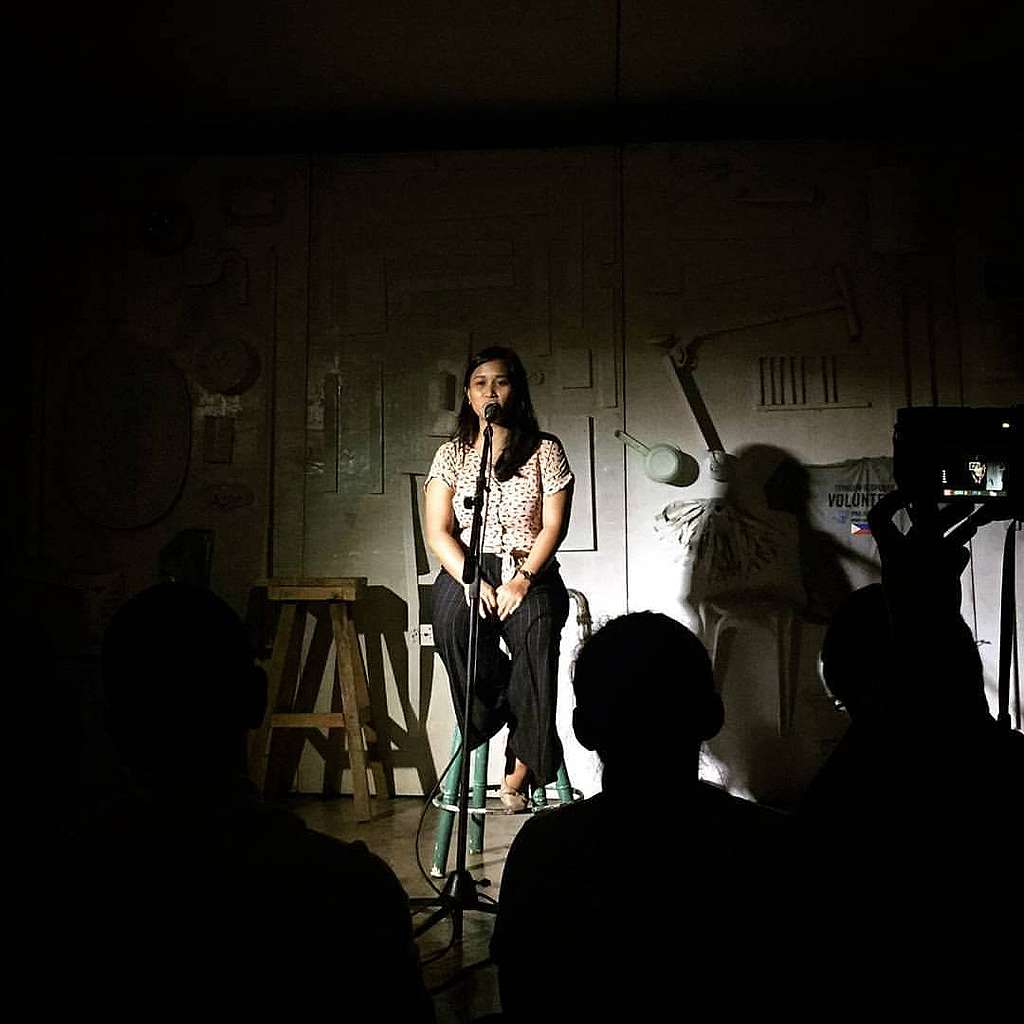
Joanna has told the harrowing story of her survival and loss before, and this evening, she told it again. As she tells me, it is different each time, and each time, a little more healing comes. She looks comfortable up there, a natural. Deep courage and vulnerability is a powerful combo, and she almost makes it look easy. You can sense her calm, unshakeable centre — from knowing her now, I think that pre-dated Yolanda, one thing the typhoon could not take. Her devotion to her family is deeply palpable; she lost her parents, eldest brother, sister-in-law and nephew in a mere hours, and she still wonders even today if there was more she could have done to save them from the deluge. In four years, life has delivered many unexpected adventures.
In July, Joanna travelled far north to the Arctic Barents sea with Greenpeace, aboard the Arctic Sunrise to oppose the Statoil Songa Enabler oil rig, 275 km north off the Norwegian coast. She was there to be a voice for survivors of extreme weather, from one of the regions most vulnerable to the impacts of climate change. Last year, Greenpeace and the Norwegian organisation, Nature and Youth filed a lawsuit against the Norwegian government, arguing that the new oil licenses they issued for drilling violate both the Paris Climate Agreement and the Norwegian Constitution, which commits the government “to safeguard the people’s right to a clean and healthy environment for future generations.”
Listening to her story of the impossible and her determined rising, right in her seaside home town where everything in her world changed forever; while the history-making lawsuit in Norway goes before the Oslo District Court this week; while world leaders converge now on Bonn for COP 23, and after a catastrophic hurricane season in the Atlantic that Caribbean countries are still reeling from, it begs some tired questions: what more do we need to do to prevent stories like these from even being experienced? Will their grandchildren and great grandchildren be telling stories like this, decades down the road? Or will they be among the myths and bedtime tales of their great-grandmothers?
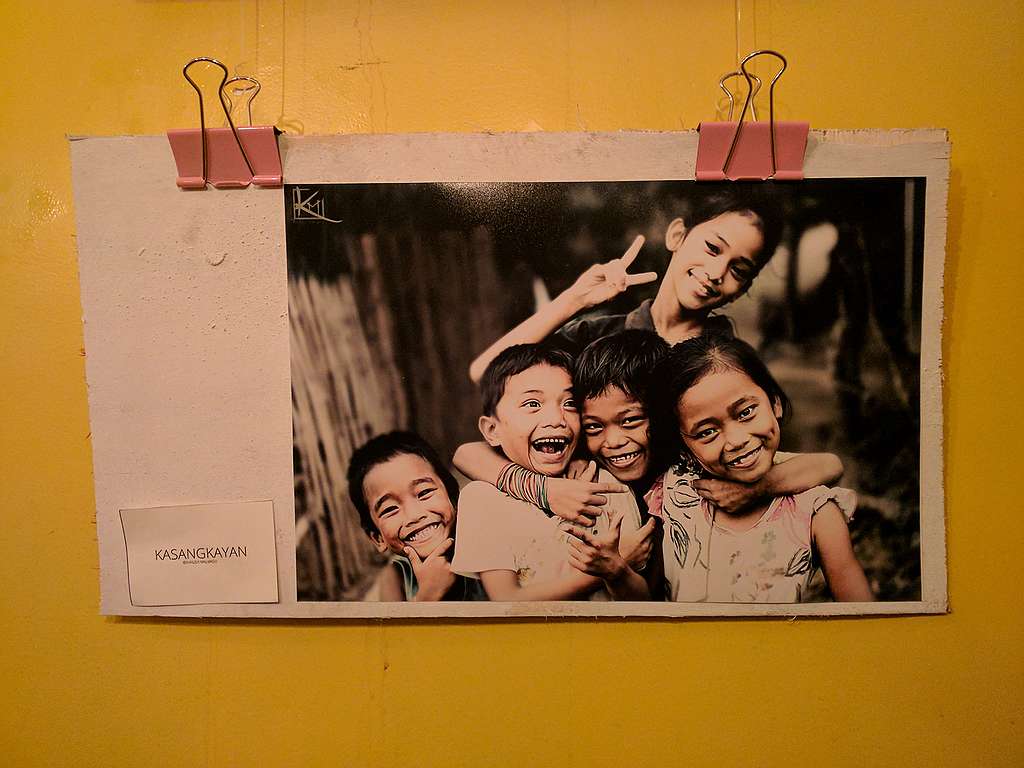
These stories, these voices from communities experiencing the most severe impacts of climate change should hold much greater space in the fora where decisions about their futures are being made. If stories like these from the eve of Yolanda’s visit grow in number and normalcy; if people in communities like Tacloban are called upon over and over, across generations and geography to survive storms that break the scales, to suffer the worst impacts of climate change, the myriad indignities and injustices that come along with it, the global community has failed them; we already have. The storytellers are telling us in no uncertain terms what is at stake here — loss of mothers and fathers, children, close friends, love, dreams, dignity, unending cycles of trauma, the incessant call for resilience— from all they have already sacrificed over the decades of delayed action.
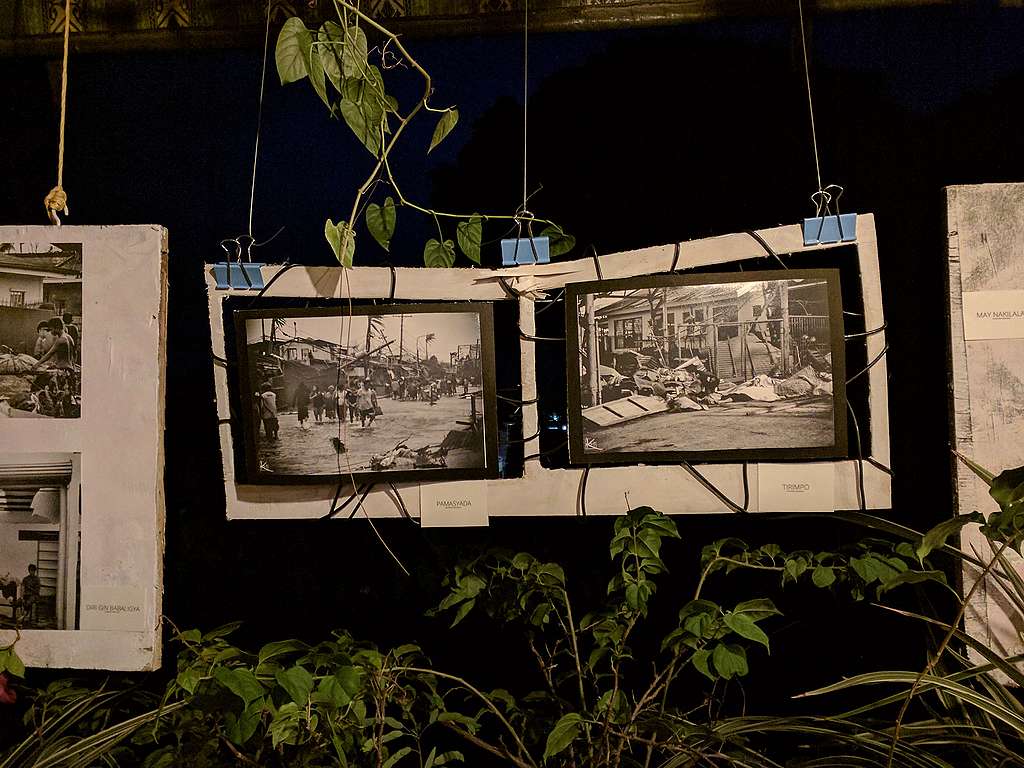
They are showing us the consequences of signing the Paris Agreement with one hand, and giving the thumbs up to big, dirty fossil fuel projects with the other. They remind us that Nature is a notoriously terrible negotiator, its laws and principles remain unbreakable, unlike those being tested in a court in Norway, and on the rulebook of the Paris Agreement talks in Bonn this week. That while it may have taken years of negotiations to forge a document governments can agree upon, in those same years, the atmosphere and the oceans have been warming and the yet unnamed super typhoons of tomorrow that will upend more lives, livelihoods, homes and communities are brewing today. And that people here are still healing, finding their way forward since the last onslaught, proud of their survival and strength, but forced to live on with what they can never reclaim.
Will we choose to create a different history for the future in time to render obsolete the poetic predictions of Alunan’s old women from the village?
“one uncharted day, the sea
will open its mouth and drink in
a child playing on the sand,
a fisherman with his nets,
great ships laden with cargo,
and still unsated, they say,
suck up cities towns villages
— one huge swallow to slake its hunger.”

